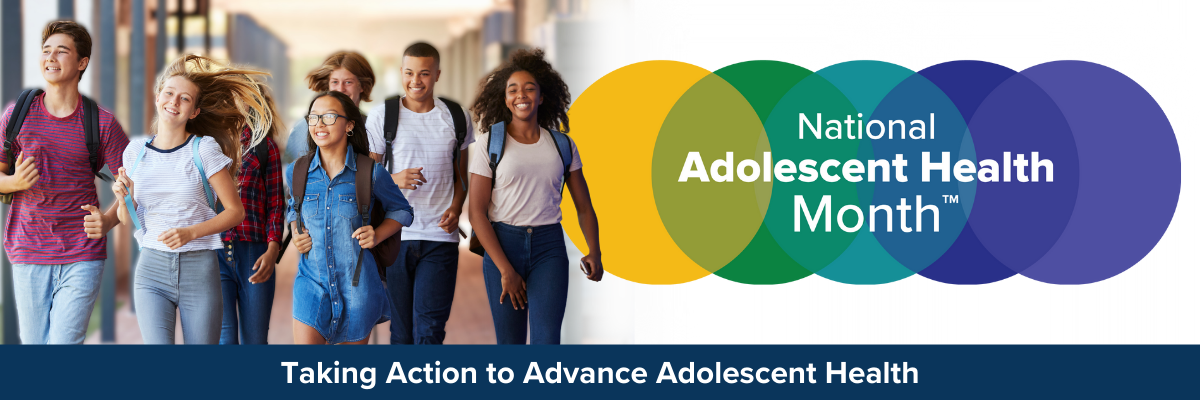
Each May, the Office of Population Affairs (OPA) celebrates National Adolescent Health Month™ (NAHM™). This annual observance highlights the importance of supporting adolescents in leading healthy, fulfilling lives. It focuses on key areas of adolescent health including mental health, physical well-being, healthy relationships, and preventive care. Find past e-updates about NAHM on the Email Updates page.
Celebrate National Adolescent Health Month with OPA in May!
NAHM is a time for adults across the country to come together and support adolescents in their communities. The theme for NAHM 2025 was Taking Action to Advance Adolescent Health. OPA encourages individuals, organizations, and communities to take action to support youth. Explore actionable steps from OPA to improve adolescent health in your community!
Supporting Adolescents Matters Today and into the Future
Adolescence is a critical period of growth and development for young people, and it shapes lifelong health outcomes. Promoting healthy behavior in adolescence has a triple benefit: it supports good health now, throughout adulthood, and into the next generation.
Caring adults, such as parents and caregivers, teachers, doctors, mentors, youth-serving professionals, and community leaders, play a vital role in fostering environments where adolescents feel safe, supported, and informed. Adults can promote healthy lifestyles for lifelong adolescent health and well-being by working to ensure young people have:
- Access to quality health care, healthy foods, and safe and supportive environments to be physically active,
- Resources to build resilience,
- Trusted information to make informed choices,
- Opportunities to engage in their communities,
- And so much more.
Together, we can ensure young people have the tools they need to succeed.
Take Action All Year Long
During NAHM and all year long, OPA’s grant recipients, health care and human services providers, youth-serving professionals, and parents and caregivers connect youth to services and opportunities that build on their strengths and potential. NAHM 2025 focused on engaging parents and caregivers to ensure that they have the information they need to support adolescents’ healthy development for lifelong wellness.
Engaging Parents and Caregivers
Parents and caregivers are critical in adolescent health and development. When adolescents are younger, parents and caregivers can provide essential support such as housing, food, and other material needs to support their adolescents’ growth and health. Beyond supporting adolescents’ physical needs, parents and caregivers can support adolescents’ mental health by providing warmth, respect, and rational expectations. Parents and caregivers also play roles in shaping young people’s values, identity, and preparedness to navigate life as adults. As adolescents age and become more independent, parents and caregivers can equip young people with the skills and resources needed to reach their full potential.
To provide support to young people, parents and caregivers must have access to the necessary knowledge, skills, and resources. When caring adults are well-informed and well-equipped, they are better prepared to understand the challenges young people face. Adults can collaborate with them in making thoughtful, informed decisions that promote their well-being and development.
Ensuring Access to Information about Adolescent Health
Parents and caregivers need to be equipped with the knowledge and skills to effectively support their adolescents. Research that answers their questions is essential. It is important to support, translate, and disseminate research and data on adolescent health and well-being. Closing research gaps is essential to data-driven efforts to advance adolescent health and well-being. Including young people, parents and caregivers, and their communities in the research process creates avenues to include their voices in the decision-making process and ensures studies are relevant and trustworthy.
We have developed a framework to help prioritize research approaches to improve adolescent health. This framework promotes research that is collaborative, comprehensive, and transparent, ensuring the findings are actionable and reflective of the wide-ranging experiences of adolescents.
National Adolescent Health Month™, NAHM™, and the NAHM logo are trademarks of the U.S. Department of Health and Human Services. Use of these marks without prior approval by HHS is strictly prohibited.
 An official website of the United States government
An official website of the United States government